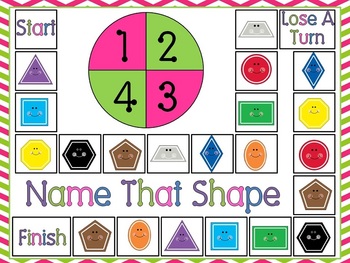
Geometric shape-based games are a great way for children to visualize the world around their on a new axis. In addition to improving their visual abilities, these games can help kids develop important pre-math and literacy skills. These games can be used to help children identify and name shapes in different sizes or orientations.
Geometric shape game helps students see the world through a different perspective
Geometric shapes games are a fun way for students learn about the properties of geometry. They allow students to use concrete objects and manipulate them to represent their own ideas. Students can practice their math skills using these games. There are several ways to use these games in the classroom.
In one game, the wheel is rotated by two players. Each player then has to identify the shape associated with each attribute. An arrow might point at a trapezoid. The attribute must be correctly matched by the player. The game helps students relate properties to their shapes, and can also encourage healthy competition among students.

They assist children to develop logic skills
Children can have fun with shapes and learn logical thinking by playing games. You can have fun with shapes in holes. Older children can sort objects by row or shape. In addition, they can learn to compare things that share one characteristic and play with a number series.
You can help your child develop visual discrimination by using shapes in games. This skill helps children see patterns in images, which will help them identify objects in a picture. By placing the objects at a child's eye level, they will learn to identify them more easily. These games also help children develop their vocabulary of logical thinking, which will help them deal with complex tasks in the future.
They are able to help them learn pre-math
The games with shapes are a great way for children to develop their pre-mathematical skills. They include basic shape recognition as well as the ability to assign shapes and global objects. They can be used to aid cognitive development. They help children understand objects, space, routes, and even recognize print and braille. You can give your child the opportunity to play games that encourage pre-math skills, as well as help you understand the relationships between numbers, shapes, and colors.
For teaching math concepts to children, shapes are great for teaching them basic math concepts like counting, measuring and comparing objects. Children can also practice classifying objects, such as matching them up. These games can be enjoyed by toddlers and pre-schoolers.

They assist them in developing literacy
For parents, games with shapes can be a fun and effective way to teach their children literacy skills. These games help children to recognize differences between basic shapes such as rectangles, triangles, and circles. These games can also be used to teach children the alphabet letters (e.g. A, B and C).
Developing literacy skills starts very early. Before they can begin to write letters, children start learning about shapes. This helps children develop literacy skills before they are ready to use them to compose words.
FAQ
What is the best way to start teaching early childhood?
The first step is to decide if you are interested in a career as an early childhood educator. Then you will need your bachelor's degrees. Some states require that students have a master's level degree.
You will also likely need to attend classes during the summer months. These courses are about pedagogy, the art of teaching, and curriculum development.
Many colleges offer associate degrees that lead directly to a teaching certificate.
Some schools offer certificates and bachelor's degrees in early education. Other schools only offer diplomas.
You may not require additional training if you are planning to teach at your own home.
What exactly is a school of trade?
Trade schools provide an alternative pathway for students who have not achieved success at traditional higher educational institutions to earn a college degree. They offer career-oriented programs that help students get prepared for specific careers. Students enrolling in these programs typically complete two years of coursework in a single semester and then enter into a paid apprenticeship program where they learn a job skill set and receive on-the-job training. Trade schools include vocational schools, technical colleges, community colleges, junior colleges, and universities. Some trade schools also offer associate programs.
How long should I prepare for college?
The amount of time you dedicate to your studies will affect how much time you spend preparing for college. Start taking college preparation courses as soon as you finish high school if you want to be able to go straight to college. On the other hand, if you plan to take several years off before attending college, you probably don't need to begin planning until later.
Talk to your teachers and parents about your plans. They might suggest specific courses. You should keep track of which courses you took and what grades you got. This way, you'll know exactly what you need to accomplish next year.
What's the difference between college and school?
Schools are usually divided into classes (or grades), with a teacher who is responsible for teaching a specific class. Colleges, which are often larger and offer more specialized classes, may also include university-level programs. Schools usually focus on basic subjects while colleges may offer a variety of subjects including arts, science, languages, business, etc. Both levels of education are designed to prepare students for higher-level study.
How much does a teacher make in early-childhood education? (earning potential)
The median salary for early childhood teachers is $45,000 per calendar year.
However, there are some areas where salaries are generally higher than average. Teachers in large urban schools receive higher salaries than teachers in rural schools.
Salaries also depend on factors like how large the district is, and whether or non-degree-holding teachers.
Teachers start off making less money than other college graduates simply because they don’t have much experience. Their wages can rise over time though.
Do I want to specialize in one area or should I branch out?
Many students choose to concentrate on one subject (e.g. English History and Math) rather that branching into several subjects. However, it's not always necessary to specialize. If you are interested in becoming a doctor, you can choose to specialize either in internal medicine or surgery. You could also choose to specialize in family practice, pediatrics, gerontology or neurology. You could focus on sales, marketing, finance, research, and management if you are interested in a career in business. The choice is yours.
Statistics
- In most developed countries, a high proportion of the population (up to 50%) now enters higher education at some time in their lives. (en.wikipedia.org)
- Globally, in 2008, around 89% of children aged six to twelve were enrolled in primary education, and this proportion was rising. (en.wikipedia.org)
- Data from the Department of Education reveal that, among 2008 college graduates, 92.8 percent of humanities majors have voted at least once since finishing school. (bostonreview.net)
- These institutions can vary according to different contexts.[83] (en.wikipedia.org)
- They are more likely to graduate high school (25%) and finish college (116%). (habitatbroward.org)
External Links
How To
What is vocational education?
Vocational Education, which is an educational system that prepares high school students for jobs after college or high school, provides them with training in specific skills required for a job (e.g. welding). This includes apprenticeship programs and on-thejob training. Vocational education stands out from general education. This is because it focuses less on general knowledge and more on developing skills for specific occupations. Vocational training is not designed to prepare individuals for university but rather to assist them in finding jobs upon graduation.
Vocational education could be offered at all levels, including primary schools, secondary school, colleges and universities, technical schools, trade schools as well community colleges, junior college, and four-year schools. In addition, there are many specialized schools such as culinary arts schools, nursing schools, law schools, medical schools, dental schools, veterinary medicine schools, firefighting schools, police academies, military academies, and other military schools. Many of these schools provide both academic instruction as well as practical experience.
A number of countries have made significant investments in vocational education over recent decades; for example, Australia, Denmark, Finland, Germany, Ireland, Japan, Luxembourg, New Zealand, Norway, Poland, Sweden, Switzerland, the United Kingdom, and the United States. It is still controversial whether vocational education is effective. Some argue it doesn't improve students' employability, while others argue it prepares them for the future.
According to the U.S. Bureau of Labor Statistics 47% of American adults have a postsecondary certificate. This figure is higher among those with more education: 71% of workers aged 25-29 with a bachelor's degree or higher are currently employed in fields requiring postsecondary credentials.
According to the BLS, nearly half of America's adult population held at least one postsecondary credential in 2012. Around one-third of Americans hold a two or four-year associate degree. One fifth of Americans have a master's, or doctorate.
The median annual wage of a bachelor's degree holder was $50,900 in 2013, compared with $23,800 for someone without one. For those with advanced degrees, the median wage was $81,300.
For those who did no high school, the median salary was only $15,000. Earn $13,000 per annum for those with less high school diplomas.